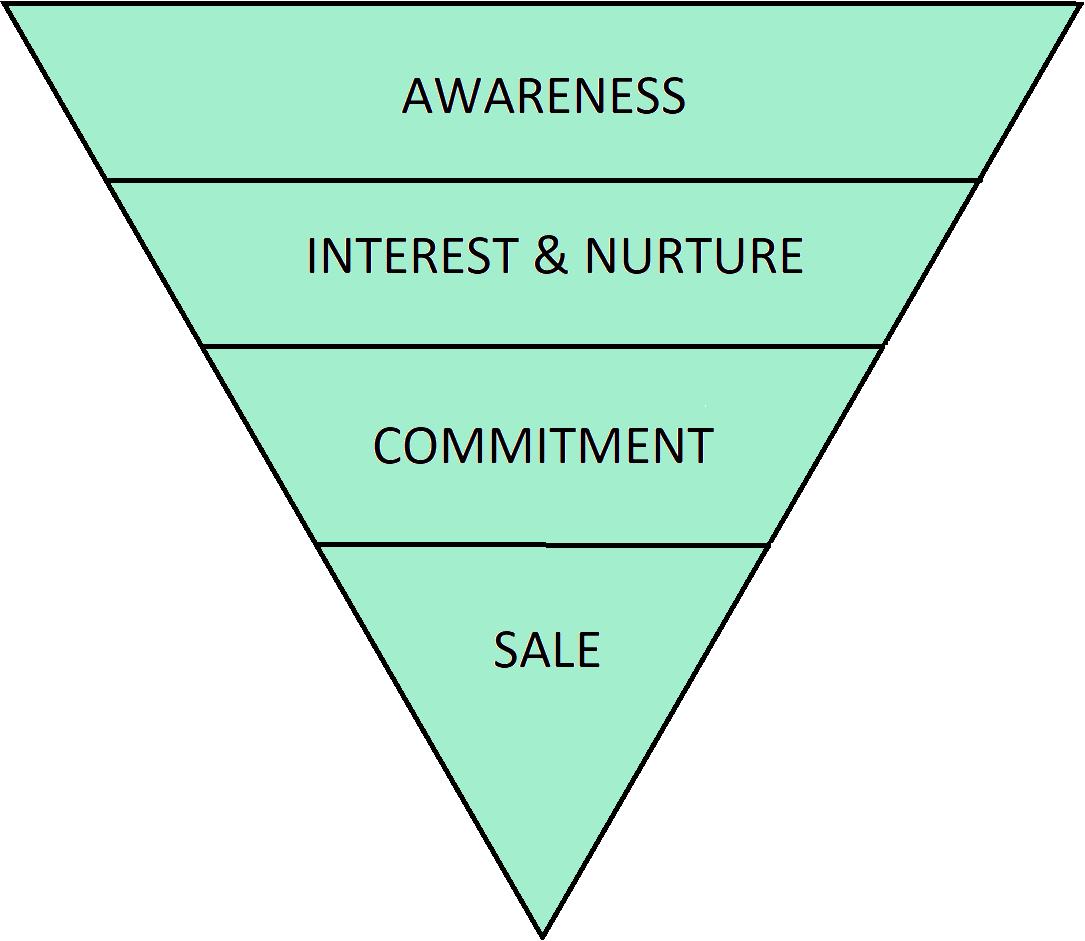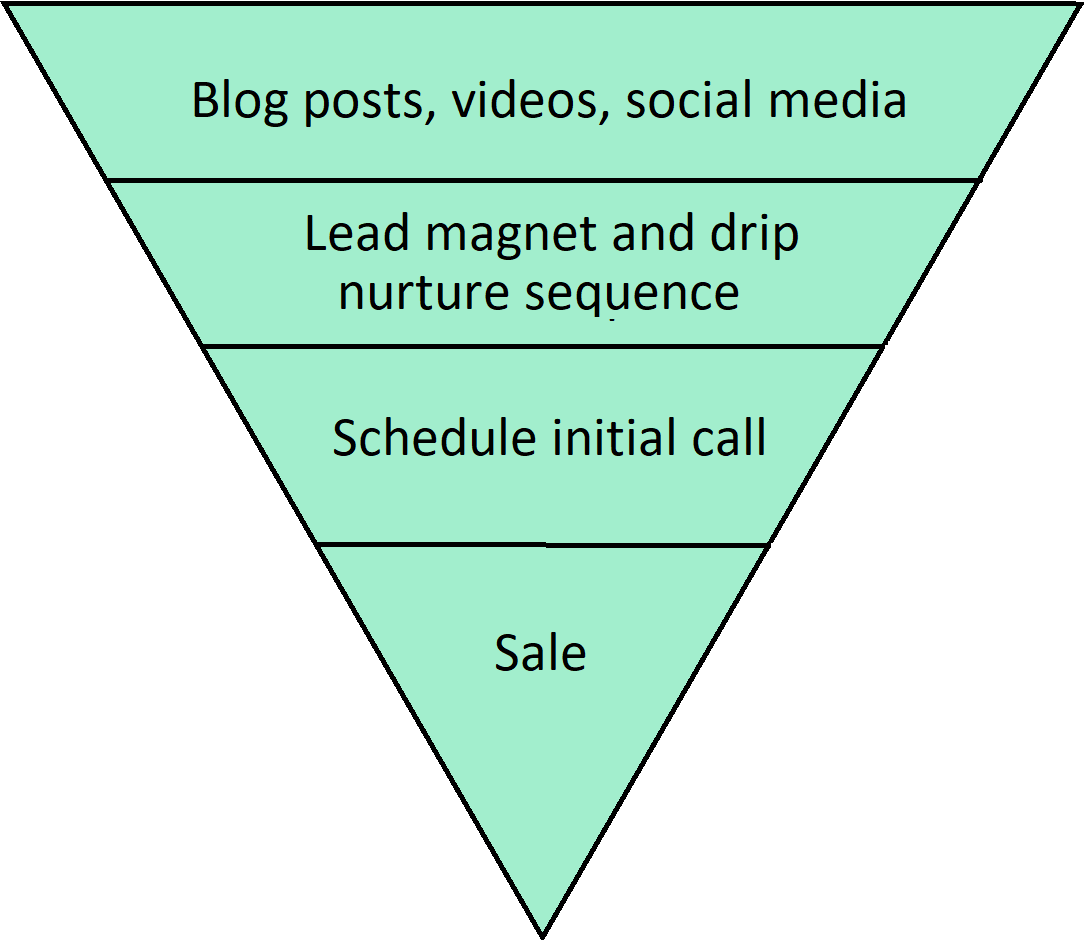Understanding How to Leverage Blog Content in Your Marketing Funnel
Nov 10, 2021
Introduction
Like our previous guest post, this post will be brought to you by Zoë Meggert, marketing coach and founder of Perfectly Planned Content. Zoë has built Perfectly Planned Content around financial planners because she firmly believes that they’re changing the world - one life at a time. Together with her clients, she and her team help develop and implement unique content marketing strategies that connect and convert. You can learn more about Zoë by clicking here.
This post, as the title suggests, will help you understand how to leverage blog content in your marketing funnel.
I often hear the question from clients and colleagues:
Why blogging?
The truth is, blog writing has always been critical to the work I’ve done with clients from the day I started freelancing in 2016. My reasoning for leveraging blog content for our clients has always been two-fold:
- As a creative writing major and an avid writer, blog writing is something I’m personally passionate about.
- Research has consistently shown that, when leveraged appropriately, blog content has a high impact on SEO, website traffic, site visitor conversion, and existing client engagement.
Let’s talk about why blog post writing is one of the most high-value pieces of marketing you can outsource in your business, and how to plug it into your marketing funnel.
The Anatomy of a Marketing Funnel
Marketing funnels can often feel like a buzzword for business owners. It’s something that entrepreneurs talk about – but may or may not fully understand. The good news is that you can successfully pare down your marketing funnel to clearly understand it’s framework - and easily see where blogging might fit in.
As a service-based business, your conversion goal is to have a prospective client sign on to work with you. However, your funnel can have multiple “entry” points that bring a prospective client all the way from simply being aware that your business exists to signing a contract. Here’s a high-level representation of a marketing funnel:

Now, let’s look at a funnel that’s specific to a virtual, service-based business owner:

The awareness portion of the funnel is all about connecting with your prospective clients in a personal way online. This can be successfully accomplished through content marketing that’s tailored to your ideal niche. Blog posts, videos, podcast episodes, and social media posting are all fantastic examples.
Next, the interest and nurture portion of the funnel is where a prospective client checks out your content and expresses an interest. At this point in your funnel, your prospective clients aren’t likely to be ready to buy yet. They still need to know more about you first. A lead magnet, paired with a drip nurture sequence that lets subscribers learn more about you, can help to educate your new prospective client about who you are, what your value proposition is, and whether or not they’re a good fit for you.
After a prospective client moves past the interest and nurture phase in your funnel, they enter the “commitment” stage. This could mean they book an introductory call with you, or directly request more information about becoming a client.
Finally, the bottom of your funnel is where conversion happens – a prospective client signs on, or you close a sale.
In this funnel sample, blog posts fit in at the top of the funnel for awareness. They generate traffic to your website based on keywords, answer questions for site visitors, and help prospective clients get to know you. However, a blog can plug in throughout your funnel if used wisely.
Where Do Blogs Fall In Your Funnel?
As a content marketing coach, I’ve worked with clients to leverage their written content in several different ways within their overall marketing strategy. This is because creating written content can be time consuming if you’re DIY-ing your marketing, and you want to ensure you’re getting the most mileage out of the work you put in! If you’re outsourcing your blog content, it becomes even more critical to maximize your use cases. Getting the most value for your investment by having your blog do double or triple duty can help to bring you peace of mind about marketing expenses and free up your budget elsewhere because you ultimately have to outsource less content creation!
Your blog can help you to:
- Increase referrals. Consider sending your blog posts to existing clients on your email list in an ongoing drip newsletter campaign.
- Build presentations. Use your blog post to generate even more awareness by using your blog content as a framework for your presentations, webinars, or videos.
- Create middle-of-the-funnel content. String several blog posts together to create a downloadable ebook, or an email course to attract sign-ups on your website.
Supplement your sales process. Send relevant content to prospects before or after sales meetings to give them more information to consider.
How Should You Use Your Blog?
At the end of the day, your primary goal for your blog should be to educate your prospects and clients, showcase your expertise, and to repurpose the content to work for your business. It can be helpful to consider the different steps in your funnel, and decide from there how content can be used:
Awareness – What am I doing to reach my target audience without requiring a commitment from them? Are my blogs being seen? Can I repurpose them to increase awareness or exposure by creating social media posts, newsletters, or graphics?
Interest & Nurture – How can prospective clients request more information from me? What opt-in’s do I have? Can I repurpose content to create a free download?
Commitment – What does “commitment” look like? Is it an introductory call? An in-person meeting? Can my blog content be used to nurture leads to get them across the “commitment” threshold?
Sale – What does my sale or closing process look like? Would additional content help to address questions or concerns? Can I use blog content to nurture my prospective clients who are interested, but not ready to commit right now?
Ultimately, your blog is what you make it. Too often, I see coaching clients create a blog and stop there. Their content dies after one cycle of sharing it out - not good! Instead, start to look at your blog content as the workhorse in your marketing funnel. The more “tasks” each blog post can help you complete, the more likely you are to continue to produce high-quality content and use it in a way that connects and converts!
Next Post
During this post, Zoë Meggert, marketing coach and founder of Perfectly Planned Content, explained how to utilize existing blog content within your marketing funnel. This will help you save time, remain efficient and consistent by recycling relevant content.
As always, thanks for following this series. If you’re a newcomer, please share your thoughts and feel free to look at the previous article.
If you found this helpful, like, comment and share. Chances are there are many people in your professional network who would benefit from this information, so don’t keep it a secret.
The next post will be up the Wednesday after next, as usual. In the meantime, feel free to set the zap up on your own. If you’re an XYPN or ACP Member, please be aware that we do offer discounted zap set up services.
If you have any questions, feel free to ask. We’re here to help! Shoot an email to [email protected] or click here to see our form templates for sale.
Each of our forms includes a comprehensive video series on how to edit and use the form. While most of our forms are primarily used by Financial Advisors / Planners, Consultants and Attorneys there are some that are non-industry specific and the others can be customized further using our JotForm training courses. Purchasing the form will enable you to book a discounted Coaching Session with us to help you edit/modify the form for your specific needs if you need additional assistance.
This blog is written by the Sphynx Automation team to help DIYers use web-based apps.
Not a DIYer? Not a problem, click the button below to chat with us.

